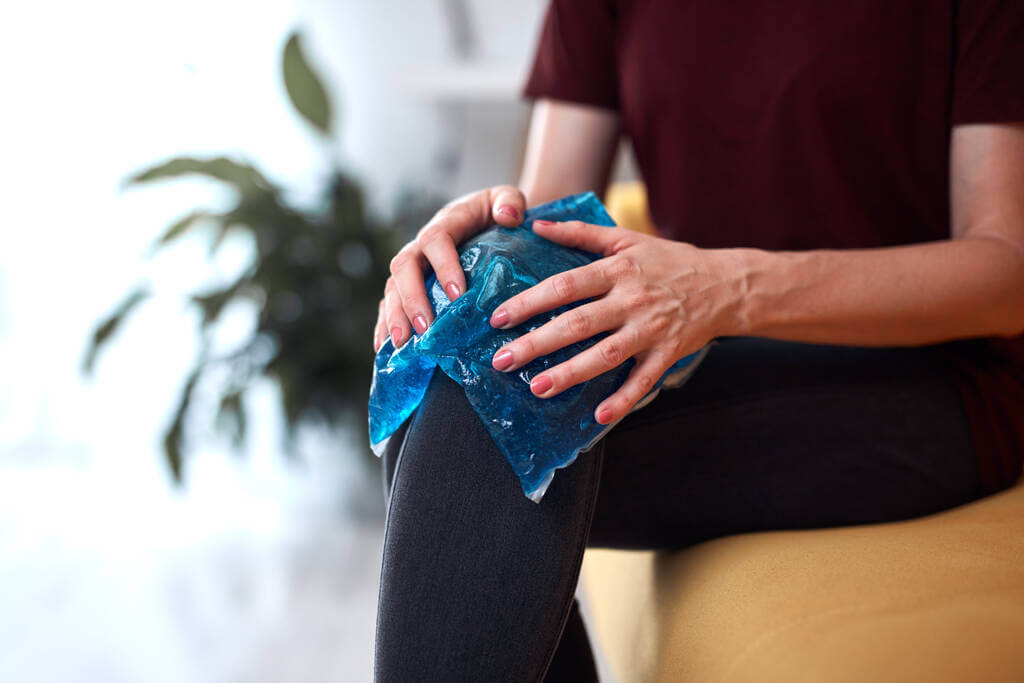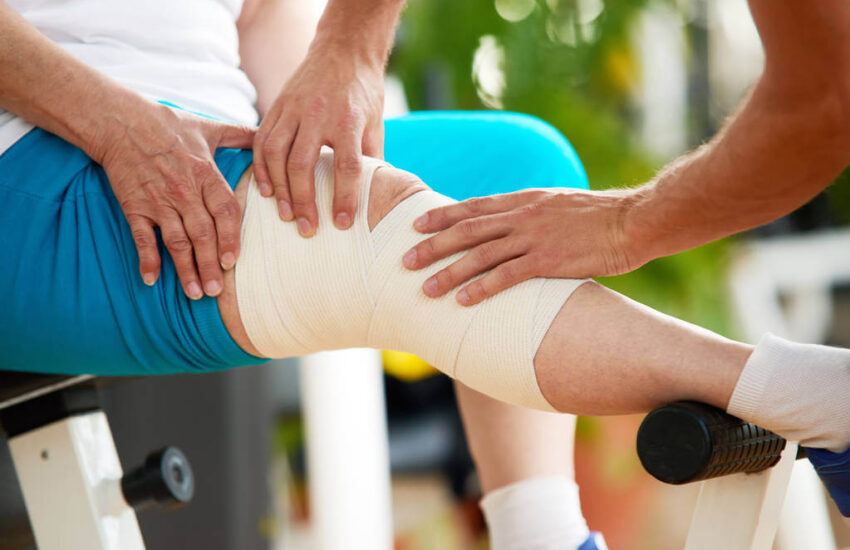One of the best and most effective quick fixes for knee pain is to increase the strength of the muscles in the upper leg. Specifically, strengthening the quadriceps muscles at the front and sides of the thigh can help protect the knee joint. Overweight people are at an increased risk for knee pain and damage, so reducing weight will also help decrease the amount of stress placed on the knee, preventing short term pain as well as long term injury.
Some people suffer from osteoarthritis, a degenerative condition of the knee caused by years of wear and tear. This condition can lead to chronic inflammation of the knee and other problems, and to prevent osteoarthritis, you need to strengthen and stretch the knee muscles. Including exercises in your knee pain management can help reduce pain and increase flexibility. A simple technique is to remember RICE for knee pain: Rest, Ice, Compression, Elevation. Read on to learn more.
Read along to know the top 3 quick fixes for knee pain to include in your knee pain treatment:

1. Exercise – The Best Knee Pain Relief Technique
Knee pain is a common problem caused by many factors, including weakening bones, overuse, and injuries. Fortunately, pain management for knee pain is possible with regular exercises and stretches. From side-leg lifts to single-leg raises, there are many exercises that can help you relieve your knee pain and prevent future injuries.
Building muscles around the knee can help prevent knee pain and provide support and cushioning. However, avoiding exercises that will cause excessive stress on the knee, such as deep squats and lunges, is essential. Instead, choose low-impact, gentle movements to prevent further knee damage. Connect with your doctor to learn more about pain therapy and treatment.
In addition to strengthening the muscles, targeted stretching and strengthening exercises can reduce the amount of pain in your knee. These exercises will help your knees function better and protect them from chronic inflammation. If you or someone you know suffers from severe knee pain, it is advisable to contact a local chiropractor or get in touch with your family doctor immediately.
2. Applying Ice Pack
Using an ice pack may not be one of the most advanced, cutting-edge knee pain relief practices, but it can bring remarkable results. Applying ice to a sore knee can relieve pain and swelling. Ideally, the ice should be used for about twenty minutes at a time. To avoid further swelling, wrap the ice pack in a clean towel. Also, try elevating the leg. This will help reduce swelling and encourage better circulation.
Ice can be applied to the knee for about 20 minutes four to eight times a day as a quick fix for knee pain. Unlike heat, ice reduces pain and inflammation by shrinking the blood vessels. It can also help prevent tendonitis from progressing. To know more about how to get rid of knee pain using ice packs, contact your local knee pain doctor or chiropractor now!
When using ice, choosing the right one for your needs is essential. Choose one that is regulated and has a timer so that it is not too hot or too cold. Moreover, if your knee pain is caused by swelling, you may want to use an ice massage machine as an essential part of your knee pain relief treatment. These machines can provide a deeper, more prolonged relief than an ice bath alone.
3. Compression Accessories
Compression for knee pain management is a standard treatment that can speed up the healing process of a knee injury. Compression supports and sleeves can be used while exercising or resting to help minimize pain, swelling, and soreness. Compression supports and sleeves are easy to apply and fit the area of concern. They are also designed to stay in place for as long as possible.
Compression accessories must be an essential part of your knee pain therapy as it helps reduce swelling and knee pain by reducing blood flow. It also reduces inflammation around your knee and promotes the healing of damaged soft tissues. It is also known to enhance overall flexibility and balance. However, these sleeves should not be too tight or loose; otherwise, you won’t benefit from them.
Compression knee sleeves can benefit both young and old. They can help people suffering from arthritis and minor injuries to the knee. They can also aid recovery from meniscus tear surgery and knee replacement surgery. However, compression knee sleeves should be chosen according to your knee pain relief treatment and your doctor’s advice.
Things to Keep in Mind If You Suffer Knee Pain
While you are sincerely working on pain management for knee pain, it is crucial to avoid the overuse of knee. Overusing it can damage the tissues, which can lead to arthritis. While many people can do exercises to reduce pain, they should avoid extreme exercises, such as running, which can further damage the knee. Likewise, it is essential to maintain a healthy weight to reduce the stress on the knees. Another option for treating knee pain is to see a physical therapist. In some cases, pain therapy can help alleviate the pain without requiring surgery. Patients often turn to drugs or surgery because of knee pain, but physical therapy is a good alternative.
Another common cause of knee pain is a torn or injured posterior cruciate ligament (PCL). This ligament runs from the thigh to the shin bone and is often torn or overstretched in high-demand sports. Injuries to the PCL usually occur during contact sports or a car accident. A blow to the knee can also cause damage to the collateral ligaments, which are located in the front part of the knee. Muscle imbalances are another cause of joint pain. Imbalanced muscle groups put extra pressure on joints, which can be caused by poor posture, flat feet, and repetitive activities. While quick fixes work for acute pain, they don’t address gradual joint deterioration and instability.
Key Takeaways
Knee pain can be caused by several conditions, from sprained ligaments to torn meniscuses. Even old injuries can flare up occasionally or persist for long periods. The best course of treatment is to see a doctor as soon as you start feeling pain in your knees. The doctor can determine the exact cause of your knee pain and offer the best-suited knee pain treatment.
There are many other causes of knee pain but some common causes and symptoms. While it is hard to pinpoint the exact cause of knee pain, there are several ways to determine the cause of your pain and find the best knee pain relief. Once you have been diagnosed with the underlying cause, you will have a more effective treatment plan.
AUTHOR BIO
John Harder is the lead marketing manager for Collegedale Physical Medicine, a fully integrated medical practice and massage therapy center in Ooltewah, TN, specializing in diagnosing and treating chronic pain and other related conditions. He is dedicated to helping every patient achieve a pain-free and better-quality life through specialized pain relief massage therapy.
